Prodoxus quinquepunctellus
Olle PellmyrAdult Characteristics
Wing expanse 12-23 mm. Forewing pure white or with 1-14 small spots, rarely forming streaks. Hindwings ranging from gray to near white, but always darker than the forewing.
Comparison with Similar Species
Some members of the Tegeticula yuccasella complex may be confused with larger individuals of this species. Prodoxus is generally less robust and typically smaller. The female has a far thicker ovipositor than does yuccasella. The male, which has very large valvae, lacks the pollex and instead has numerous blunt spines along the valval edge.
Host, Oviposition, and Larval Feeding Habits
The species utilizes many capsular-fruited yuccas (Agavaceae). Larvae feed inside the inflorescence stalk, and pupation takes place inside the gallery. A few records from fleshy-fruited yuccas were assumed by Frack (1982) to have resulted from mislabelling.
Geographic Distribution
Prodoxus quinquepunctellus occurs throughout the composite range of its capsular-fruited hosts, including areas where the hosts have been introduced. the northern limit is most likely in southern Alberta, Canada, and the southern limit on the Mexican Plateau of northern Mexico.
Habitat
In desert, grassland, openings in pine or deciduous forest, or coastal chaparral and dunes with Yucca.
Shrubby grassland in Comanche Co., Texas, and a cleared area in Lowndes Co., Mississippi, represent two typical habitats of host yuccas.
References
Davis, D.R. 1967. A revision of the moths of the subfamily Prodoxinae (Lepidoptera: Incurvariidae). U.S. Nat. Hist. Mus., Bull. 255:1-170. Smiths. Contrib. Zool. 524:1-88.
Frack, D.C. 1982. A systematic study of prodoxine moths (Adelidae: Prodoxinae) and their hosts (Agavaceae), with descriptions of the subfamilies of Adelidae (s. lat.). M.S. thesis, California State Polytechnic University, Pomona, CA.
Title Illustrations

| Location | Brewster Co., Texas |
|---|---|
| Specimen Condition | Dead Specimen |
| Sex | Male |
| Image Use |
 This media file is licensed under the Creative Commons Attribution-NonCommercial License - Version 3.0. This media file is licensed under the Creative Commons Attribution-NonCommercial License - Version 3.0.
|
| Copyright |
© 1996
Olle Pellmyr

|
| Location | Brewster Co., Texas, USA |
|---|---|
| Specimen Condition | Dead Specimen |
| Sex | Female |
| Image Use |
 This media file is licensed under the Creative Commons Attribution-NonCommercial License - Version 3.0. This media file is licensed under the Creative Commons Attribution-NonCommercial License - Version 3.0.
|
| Copyright |
© 1996
Olle Pellmyr

|
| Scientific Name | Prodoxus quinquepunctellus |
|---|---|
| Location | Comanche Co., Texas, USA |
| Specimen Condition | Dead Specimen |
| Sex | Female |
| Image Use |
 This media file is licensed under the Creative Commons Attribution-NonCommercial License - Version 3.0. This media file is licensed under the Creative Commons Attribution-NonCommercial License - Version 3.0.
|
| Copyright |
© 1996
Olle Pellmyr

|
About This Page
Olle Pellmyr

University of Idaho, Moscow, Idaho, USA
Page copyright © 1996 Olle Pellmyr
 Page: Tree of Life
Prodoxus quinquepunctellus .
Authored by
Olle Pellmyr.
The TEXT of this page is licensed under the
Creative Commons Attribution-NonCommercial License - Version 3.0. Note that images and other media
featured on this page are each governed by their own license, and they may or may not be available
for reuse. Click on an image or a media link to access the media data window, which provides the
relevant licensing information. For the general terms and conditions of ToL material reuse and
redistribution, please see the Tree of Life Copyright
Policies.
Page: Tree of Life
Prodoxus quinquepunctellus .
Authored by
Olle Pellmyr.
The TEXT of this page is licensed under the
Creative Commons Attribution-NonCommercial License - Version 3.0. Note that images and other media
featured on this page are each governed by their own license, and they may or may not be available
for reuse. Click on an image or a media link to access the media data window, which provides the
relevant licensing information. For the general terms and conditions of ToL material reuse and
redistribution, please see the Tree of Life Copyright
Policies.
Citing this page:
Pellmyr, Olle. 1996. Prodoxus quinquepunctellus . Version 01 January 1996 (under construction). http://tolweb.org/Prodoxus_quinquepunctellus/12428/1996.01.01 in The Tree of Life Web Project, http://tolweb.org/




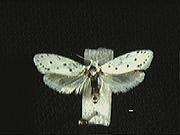
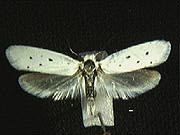
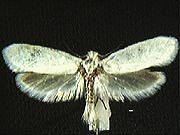
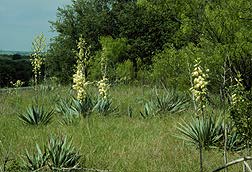
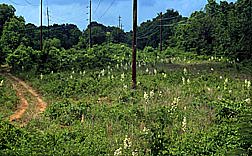

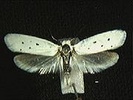



 Go to quick links
Go to quick search
Go to navigation for this section of the ToL site
Go to detailed links for the ToL site
Go to quick links
Go to quick search
Go to navigation for this section of the ToL site
Go to detailed links for the ToL site